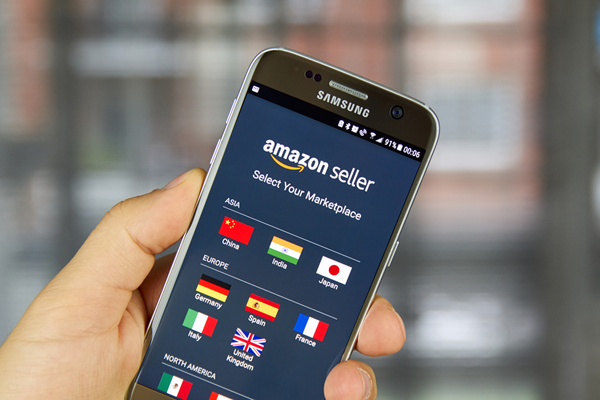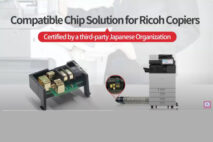 Once upon a time, retailers loved third-party supplies. All of the big-box outlets including mass merchants, consumer electronics stores, office superstores, and others carried some assortment of non-OEM cartridges, often sold right alongside the equivalent OEM products. For a time, when lots of pages were being generated by home users, consumers could even get ink cartridges at grocery stores and pharmacies.
Once upon a time, retailers loved third-party supplies. All of the big-box outlets including mass merchants, consumer electronics stores, office superstores, and others carried some assortment of non-OEM cartridges, often sold right alongside the equivalent OEM products. For a time, when lots of pages were being generated by home users, consumers could even get ink cartridges at grocery stores and pharmacies.
Today, grocery stores and pharmacies have removed all the inkjet cartridges from their shelves, and third-party supplies have disappeared from most of the big-box stores. With the exception of a couple of office superstores—Staples and Office Depot/OfficeMax—large retailers limit the amount of OEM cartridges they sell to just the most popular SKUs. Those retailers that continue to sell consumables have changed their planograms to accommodate more popular items like accessories for smartphones and tablets and scaled back the amount of shelf space they devote to digital imaging supplies.
As third-party ink and toner cartridges have largely disappeared from retail shelves, they have become widely available online. Large online retailers continue to offer plenty of non-OEM and OEM consumables on their websites. In addition to ink and toner cartridges, some big-box store websites like Walmart.com even sell both OEM and third-party fuser units. There is also a plethora of third-party supplies available at websites with no affiliation to traditional brick-and-mortar retailers, including the giant marketplace at Amazon.com.
Selling Supplies at Big-Box Stores
The channels for the supplies used in lower-end printers and MFPs have been evolving for decades. In the 1990s, ink and toner cartridges were transformed into consumer packaged goods when printers became a fixture in the home. Category managers loved non-OEM supplies because retailers could demand hefty margins of 30 points, 50 points, or even more from third-party supplies vendors—and get them. Vendors would accede to almost any demand because even with the tiny margins, they could still turn a nice profit tapping into the sales volumes large retailers provided. After gaining shelf space at a big-box distributor, many remanufacturers grew larger and generated more revenue than they had ever dreamed possible.
Non-OEM consumables vendors supplying retailers prospered from the late 1990s until around 2005. Market conditions were prime: home printer users were printing high volumes and OEMs were charging a premium for the supplies used in small-office/home-office (SOHO) devices. But things changed quickly. OEMs launched an assortment of cartridges at various price points. Although some of these newer cartridges actually cost more to use on a cost-per-page basis, the actual price tag didn’t cause sticker shocker. OEMs also developed new programs to support their channel partners with marketing dollars, channel programs, and other incentives that made category managers reassess the total value proposition of OEM placements. Concurrently, printer OEMs aggressively pursued any company that might encroach on their patents, especially those firms supplying the big-box stores. With the specter of supply-chain issues and legal problems hovering around non-OEM ink and toner cartridges and OEMs more willing to support their products, retailers began removing third-party supplies from their stores just before the recession set in.
Supplies in Cyberspace
Historically, ink and toner cartridges have always sold well online. As a category, office supplies have been available on the Internet for over 20 years, and many office superstore sites like Staples.com emerged as some of the largest e-commerce sites on the Internet. Retailers recognized that consumers would welcome the convenience and ease of web-based shopping. Moreover, retailers liked offering cartridges online because websites eliminated many inventory and sell-through headaches associated with endless SKU proliferation.
But retailers faced stiff competition online. Web-savvy entrepreneurs with access to cheap third-party supplies set up independent retail websites and began targeting online shoppers. Today, Staples.com continues to do a lot of business, but its ranking has dropped significantly. Offering non-OEM consumables at low price points and using tactics specifically to drive online sales, the independent sites have successfully lured away many consumers who once used office superstore websites.
Independent sites marketing third-party supplies are now feeling a lot of pressure from Amazon. With legions of suppliers, Amazon all but eliminated problems like backorders and slow delivery times and further improved its value proposition with innovative enhancements like Amazon Prime and other perks that attracted loyal customers. Initially, online consumables vendors did business on Amazon in an attempt to siphon customers off the marketplace and convert them to devotees of their independent sites. While some have been marginally successful, most online third-party supplies purveyors recognize that the mega marketplace is an important channel for their business with which it is folly to compete.
Non-OEM Supplies on Amazon
We recently explored how well OEM printers and ink and toner sell on Amazon (see “OEMs Tap into SOHO and Flirt will Higher Market Segments on Amazon”), but the marketplace is also now a huge channel for third-party supplies vendors. In fact, we believe that it is one of the most important channels that third-party supplies vendors currently use to reach SOHO customers.
It appears that Amazon is now a key channel for Clover Imaging Group (CIG), which is the largest remanufacturer in North America and arguably the region’s most recognized reman. As a major supplier to many retailers, Clover managed to grow even as shelf space shrank at brink-and-mortar stores. The company has suffered, however, as more of its customers have turned away from remanufactured cartridges in favor of less-expensive new-build cartridges, which are widely available on Amazon. We estimate that CIG’s total revenue has dropped by about a third since 2015. Since last summer, we have heard reports from various sources, including the debt-rating service Moody’s Investors Service, that CIG has improved its business (see “Clover’s Debt Rating Is Upgraded by Moody’s”).
It is difficult to gauge how much business CIG does on Amazon, but it certainly does a lot. The firm sells its cartridges under various brands including CIG, Dataproducts, MSE, and West Point Products. CIG also makes remanufactured cartridges for a number of private-label customers selling on Amazon. It is widely believed that the company produces Essendant’s Innovera line of remanufactured ink and toner cartridges, for example, as well as remanufactured cartridges sold under the Xerox brand. The office superstore Staples sources its remans from CIG, and markets them under the Staples brand and the Sustainable Earth brand on Amazon. And CIG makes remanufactured cartridges for Office Depot, which are marketed under the same brand on Amazon.
To our knowledge, CIG is the remanufacturer with the most products sold on Amazon, but it is not the only one. Germany’s Turbon Group has the rights to use the IBM brand on its remanufactured toner cartridges, and its Turbon USA subsidiary offers an assortment of IBM brand toner SKUs on Amazon. The regional remanufacturer RPT Toners, which is based in Bensenville, IL, markets a broad range of remanufactured cartridges under its Reliance brand, which includes SKUs for use in Brother, Dell, HP, Lexmark, Ricoh, and Xerox machines.
LD Products, the largest independent online reseller of third-part supplies in North America, is a big player on Amazon. The company sells both remanufactured and compatible ink and toner cartridges and uses two brands/seller names: LD Products and SpeedyInks. Over the years LD has sourced its cartridges from a wide variety of Chinese aftermarket supplies manufacturers, including first-tier and second-tier firms. Who actually makes LD Products/Speedy Inks cartridges will vary from ASIN to ASIN and can even change over time if the company changes vendors for different cartridge models.
Plenty of New-Builds
While remanufacturers sell their products on Amazon, remanufactured cartridges typically don’t hold top-selling positions on marketplace, compatibles do. This is due to smart marketing tactics and other strategies vendors use to move up Amazon rankings. It also helps that compatibles are lower-priced than remanufactured cartridges, giving compatibles an advantage on a platform that rewards low-priced products with high rankings.
While it is easy to find new-build compatibles on Amazon, it is tough to identify the manufacturers and determine the relationships between the companies. The following list represents many of the leading brands/seller names of third-party ink and toner cartridges on the marketplace:
- Arcon
- Arthur Imaging
- Aztech
- Catch Supplies
- Cool Toner
- Do It Wiser
- E-Z Ink
- Ejet
- EPS
- GREENBOX
- IKONG
- InkWorld
- JARBO
- JetSir
- K-Ink
- LD Products
- Lemero
- Linkyo
- LxTeK
- myCartridge
- Mytoner
- Office World
- Smart Ink
- True Image
- Uniwork
- V4INK
- Vaker
- ValueToner
After extensive research, we have discovered that many of the above brands are related, but we can’t say anything more than that definitively. Some are brands with trademarks owned by the same companies or individuals. Some are brands owned by the same individual but listed under different companies. Some are the names of firms that are importing products from China and remanufacturing, while others are seller names that import only. Using a variety of documents, including import records, trademark registrations, incorporation filings, and court papers, we have attempted to contact various companies and individuals linked to the names above. Few of the individuals we contacted returned our requests for information, and some of those that did claimed not to know the seller names or brands that we enquired about.
While it appears that manufacturers are reluctant to discuss the brands under which their products sell on Amazon, we have been able to identify an affiliation between at least some of the above companies in court filings. In a pair of patent-infringement complaints filed by Seiko Epson, for example, we learned that Ejet, LxTek, Unitoner, and ValueToner are all linked to one individual, Wei Feng Li, who does business using the various brand names (see “Epson Amends Lawsuit against E-Z Ink, Files New Lawsuit against FTrade and GPC Trading”). Epson’s lawsuits suggest affiliations between these entities and E-Z Ink, Cartridge Evolution, TW Trading, FTrade, and GPC Trading.
One must tread carefully when making claims about who is doing what with the leading brands on Amazon. A legal row broke out recently between Chinese third-party supplies vendor Aster Graphics and Steven Giannetta over claims that Mr. Giannetta made involving some of the above brands. In a post on the Tonernews.com site dated April 18, 2019, Mr. Giannetta claimed that Aster Graphics was selling its products using several of the above brands. According to the post, “Aster operates at minimum 4 brands: Cool Toner, True Image, Arcon, and Aztech” on Amazon. On April 23, Aster Graphics filed suit against Mr. Giannetta in the Superior Court of the State of California, County of Orange, in part because of the claims that the firm markets directly to end users on Amazon under these brands (see “Aster Sues Steven Giannetta over TonerNews Reports”). Aster Graphics says the claim is false and that it “has never sold any of its products direct on Amazon. All the brands and accounts Defendant referred to in its articles are owned or controlled by different entities.”
After researching various brands, we can say that on Amazon it can be very difficult to tell what you are purchasing, from whom, and who actually manufactured the cartridge. And, while it certainly provides some transparency, Amazon does little to make sussing out information about the products sold on its marketplace easy. We will continue to attempt to identify the relationships between manufacturers, their customers, and the leading Amazon brands.





